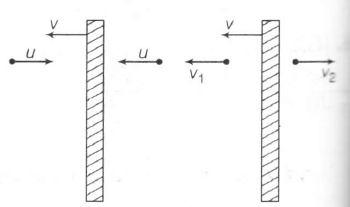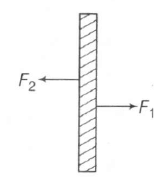Answer:
Option A,C,D
Explanation:

Just before the collision Just after the collision
$v_{1}=u+2v$
$\triangle v_{1}=(2u+2v)$
$F_{1}=\frac{\text{d} \rho _{1}}{\text{d}t}$
= $ \rho A(u+v)(2u+2v)$
= $2 \rho A(u+v)^{2}$
$v_{2}=(u-2v)$
$\triangle v_{2}=(2u-2v)$
$ F_{2}=\frac{\text{d} \rho _{2}}{\text{d}t}$
= $ \rho A(u-v)(2u-2v)$
$=2 \rho A(u-v)^{2}$

[$\triangle F$ is the net force due to the air molecules on the plate]
$\triangle F=2 \rho A(4uv)=8 \rho Auv$
$P= \frac{\triangle F}{A}=8 \rho (uv)$
$F_{net}= (F-\triangle F) =ma$
[m is mass of the plate]
$ F -(8 \rho Au)v=ma $